Gynecomastia, a condition characterized by the enlargement of breast tissue in males, can be particularly challenging for adolescents. It often leads to physical discomfort and emotional distress during these formative years. Understanding when to seek treatment for teenagers is crucial for their well-being and development.
Understanding Gynecomastia in Adolescents
Gynecomastia can arise from various factors, including hormonal changes, obesity, the use of certain medications, or underlying health conditions. During puberty, hormonal fluctuations are common, which can temporarily lead to the enlargement of breast tissue in males. While it can affect one or both breasts, sometimes unevenly, the condition is not typically associated with severe pain, but it can cause tenderness.
The factors contributing to the development of gynecomastia are diverse and include the following:
Hormonal Changes: The imbalance between estrogen and testosterone during puberty is a primary factor. While both hormones are present in all genders, an increase in estrogen or a decrease in testosterone can lead to the development of breast tissue.
Obesity: Excess fat tissue can lead to higher levels of estrogen production, further contributing to the development of gynecomastia. Additionally, obesity can exacerbate the appearance of enlarged breasts in males by increasing fat deposition in the chest area.
Medication Use: Certain medications can influence hormone levels or directly cause breast tissue growth as a side effect. These include drugs for treating ulcers, cancer, depression, and heart conditions, as well as anabolic steroids and some antibiotics.
Underlying Health Conditions: Conditions that affect hormonal balance, such as hyperthyroidism, kidney failure, liver disease, and tumors in the glands that produce hormones (testes, adrenal glands, and pituitary glands), can lead to gynecomastia.
When to Seek Treatment
When considering the appropriate time to seek treatment for gynecomastia, especially in adolescents, it’s crucial to monitor the condition’s progression and its impact on the individual’s physical and emotional well-being. Main Line Institute of Plastic Surgery, renowned for its expertise in addressing a wide range of facial and body aesthetic concerns, also provides guidance and treatment options for those dealing with gynecomastia.
It is advisable to seek medical consultation if:
- Persistence Beyond Teenage Years: While gynecomastia commonly occurs during puberty, it’s expected that the condition will resolve on its own as hormone levels balance out. If breast enlargement persists beyond the teenage years, it’s a signal to seek professional advice.
- Significant Pain or Tenderness: If the enlarged breast tissue causes considerable discomfort, pain, or tenderness, it warrants a medical evaluation to alleviate physical discomfort and address any potential underlying issues.
- Embarrassment or Psychological Distress: The emotional and psychological impact of gynecomastia cannot be understated. If an individual experiences embarrassment, a decrease in self-esteem, or any form of psychological distress due to the appearance of their breasts, professional consultation is recommended.
- Noticeable Asymmetry Between the Breasts: Asymmetry, where one breast is noticeably larger than the other, can further complicate feelings of self-consciousness and discomfort, making it a valid reason to explore treatment options.
At the Main Line Institute of Plastic Surgery, the approach to treating gynecomastia is tailored to the individual’s specific needs and circumstances. Dr. Ryan Hoffman is equipped to assess the need for treatment, which may range from medication to address any hormonal imbalances to surgical interventions designed to remove excess breast tissue and restore a more traditional male chest contour.
Treatment Options
Treatment options for gynecomastia vary based on the severity of the condition, its underlying causes, and the impact it has on the individual’s life. Here’s a detailed look at the primary approaches to managing this condition:
Observation
In cases of gynecomastia related to puberty, particularly in adolescents, initial management often involves an observational approach. This strategy is recommended due to the common temporary nature of the condition during this developmental stage. Hormonal levels typically stabilize within two to three years, leading to a natural resolution of breast enlargement. During this period, regular check-ups may be scheduled to monitor the condition’s progression and ensure no underlying health concerns are causing the breast tissue enlargement.
Medication
When gynecomastia is linked to an underlying hormonal imbalance, medication may be prescribed to address these discrepancies. Treatments might target reducing estrogen effects or increasing testosterone levels, depending on the individual’s specific hormonal imbalance. Medications are particularly effective if gynecomastia is diagnosed early and are chosen based on a thorough evaluation of the patient’s hormonal status and overall health.
Surgery
Surgical intervention is considered for cases of persistent gynecomastia that lead to significant physical discomfort, emotional distress, or both. Two primary surgical options are:
- Liposuction: This procedure focuses on removing excess fat from the breast area but does not remove breast gland tissue. It’s effective in cases where gynecomastia is primarily the result of fatty tissue.
- Mastectomy: This surgical approach involves the removal of the glandular breast tissue. It is often performed endoscopically, meaning through small incisions, resulting in less scarring and a shorter recovery time. A mastectomy is suitable for treating more severe forms of gynecomastia or when there’s a significant amount of glandular tissue.
These surgical procedures aim to create a chest that is flatter, firmer, and better contoured, aligning more closely with traditional male chest appearance. The choice between liposuction and mastectomy depends on the nature of the breast enlargement and the patient’s goals for treatment.
Get In Touch
For more information on gynecomastia in adolescents and to explore treatment options, please contact Dr. Hoffman. Our team at the Main Line Institute of Plastic Surgery is dedicated to providing expert care and support to teenagers experiencing this condition, ensuring they receive the appropriate treatment to improve their quality of life.


